
Current Easement Portfolio
ISHS currently manages 13 properties in its easement portfolio, protecting a total of 20 historic buildings across Idaho. In addition, ISHS oversees 10-year easements established through a partnership with the Idaho Heritage Trust and supported by the Paul Bruhn Historic Revitalization Grant from the National Park Service, as part of Idaho’s Historic Theatre Revitalization Subgrant Program.
Contact
(208) 334-3861

Rupert | Minidoka County
Wilson Theater
The Wilson Theater was built in 1920 by Daniel Ward Wilson with Robert Paysee as contractor. The theater is of vernacular design but contains a blending of elements of Beaux Arts style and brick commercial block. The theater was purchased in 1999 by the City of Rupert as part of a renovation project to restore the building back to its historic appearance.

Moscow | Latah County
McConnell-McGuire Building
The McConnell-McGuire Building in Moscow, Idaho, is notable for its exceptional cast-iron ornamentation, crafted by the Moscow Iron Works in its first major commission. Designed by Denver architects W. J. Lewis and M. D. Ogilbee and completed in the early 1890s, the building originally housed the McConnell-McGuire Department Store, co-owned by future Idaho governor William J. McConnell. Later tenants included Nat Williamson’s lively Boston Store, famous for its bold advertising, and by 1928 the upper floors were converted into 43 apartments.

Hailey | Blaine County
W.H. Watt Bank
The W.H. Watt Building is architecturally significant as a rare example of early brick architecture in Hailey. An 1889 fire that demolished the business district of Hailey left few buildings still standing. The rear portion of the Watt building, which may date from as early as 1882, is the only known extant brick survivor of the fire. The Watt Building is connected in local memory with W.H. Watt, who had the building erected as a bank. Dr. Robert Wright acquired the building in 1914 and used it for his medical practice until 1965.
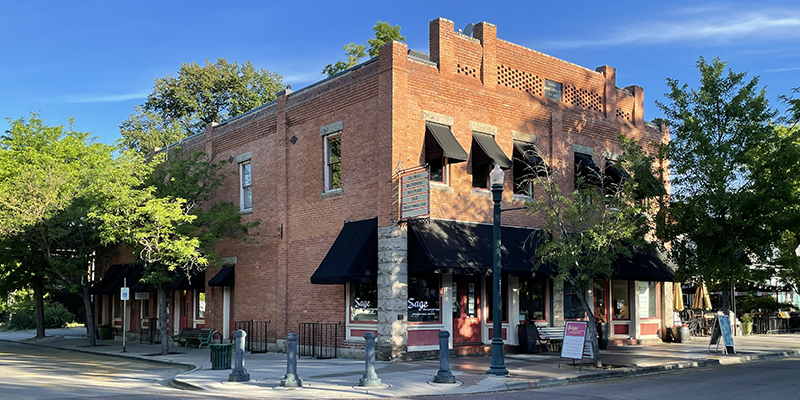
Boise | Ada County
Odd Fellows Building
On November 1, 1902, the Independent Order of Odd Fellows (I.O.O.F) Lodge, No. 97, purchased two lots at the intersection of Thirteenth and Eastman Streets for $700 with the purpose of constructing a new lodge. With more than 200 people in attendance, Odd Fellows and Rebekahs gathered to dedicate the building on October 8, 1803, to the principles of the order—friendship, love, and truth. Located at the end of the streetcar line that once connected the North End Neighborhood to downtown Boise, the building’s entire second floor and portions of the basement and ground floors were devoted to lodge purposes. Two rooms on the ground floor that faced Thirteenth Street were occupied by a dance hall.

Boise | Ada County
State Capital Building
In 1905, the Idaho legislature passed a bill authorizing construction of the State Capitol Building. Designed by the local architectural firm, Tourtellotte and Hummel, the dome and central parts of the building were constructed from 1905 to 1912 with the wings (House and Senate chambers) being added in 1919 and 1920. A majority of the superstructure is constructed of Boise sandstone—quarried at nearby Table Rock and transported from the quarry to the build site by incarcerees from the Old Idaho Penitentiary. To this day, the Idaho State Capitol Building is the only capitol building in the United Sates heated by geothermal water.

Boise| Ada County
Alaska Building
In 1906, John P. Tate hired J.E. Tourtellotte and Company to design a business building on Main Street. Tourtellotte’s original plans included two stories and a basement with a deck around the stores, which were constructed in the Renaissance Revival Style in 1906. An additional two stories were added in 1911. The completed Alaska Building owes its namesake to Tate’s infatuation with the State of Alaska. The original tenants included Link’s Business College and a general mercantile store, Blake and Reilly. Later, Blake and Reilly changed the name of their store to the Cash Bazaar, and by 1922, were leasing the entire building.
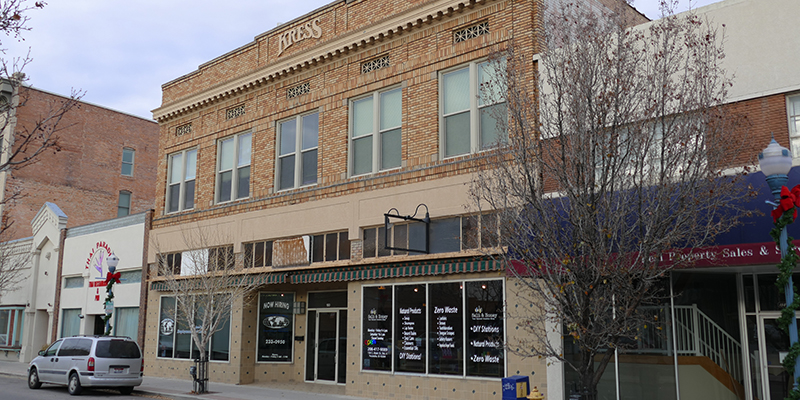
Pocatello | Bannock County
Kress Building
Built prior to 1927, the two-story, tan brick building was constructed to house the S.H. Kress & Co department store, which was part of a chain of five and dime retail stores established by Samuel Henry Kress in 1896. In an attempt to distinguish his stores from those of his competitors, he created an architectural division within his company to design distinctive buildings. Located on Main Street in downtown Pocatello, this Kress building still boasts its attic-story “Kress” nameplate.
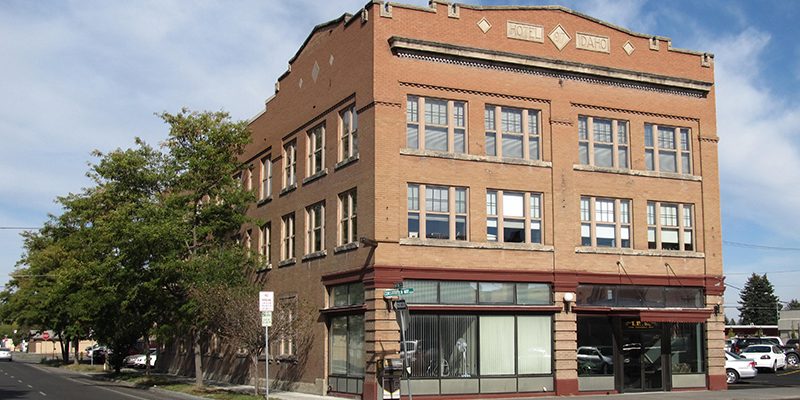
Idaho Falls | Pocatello County
Hotel Idaho
The Hotel Idaho was built in 1917 by its original owner, Frederick C. Hansen. The southwest portion of the main floor was occupied by Hart-Elsworth Auto Company, which sold Nash automobiles. Later, this became a café with the hotel lobby in the southeast corner. The building was purchased in 1944 by Ira R. Taylor, a former warden at the Idaho State Penitentiary. Ross Gillespie, a Taylor employee, became owner and manager in 1954. The hotel closed in 1979.
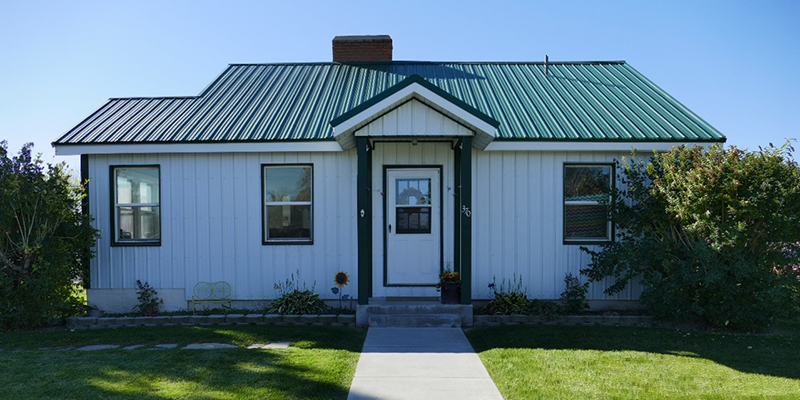
Oakley | Cassia County
Oakley Administrative Site
The Oakley Guard Station of the Sawtooth National Forest is a well-maintained group of white frame buildings including a small Colonial Revival office, a bungalow residence, and outbuildings. Adjacent to forest lands that gave Oakley a decided advantage during early years of settlement and provided logs for significant early structures. The community survived partly as a good location for a Forest Service ranger station (later a guard station) that helped to maintain the town
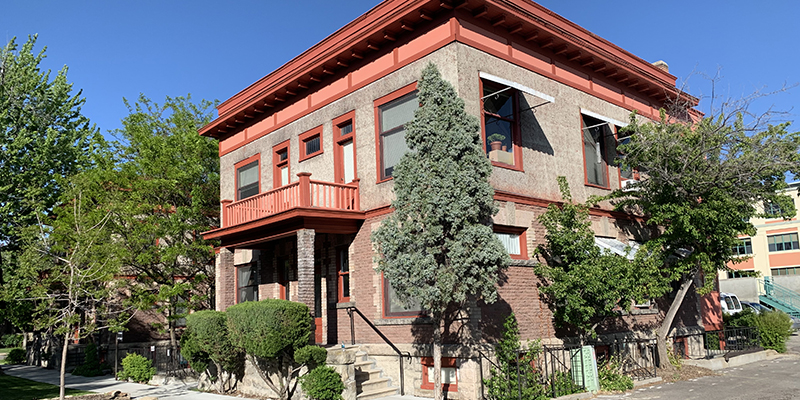
Boise | Ada County
Eichelberger Apartments
In 1910, A.V. Eichelberger, manager of the Boise Valley Fruit Growers’ Association, commissioned the architectural firm Tourtellotte and Hummel to design an apartment building on Ninth and Franklin Street. The two-story, U-shaped building designed in the Colonial Revival Style offered modern amenities that made it a desirable place to live. Many of the single-story flats boasted a living room, dining room, buffet and bath, “disappearing” (murphy) beds, and large closets. The building was equipped with hot water, and the basement housed a large laundry room and individual storage rooms for each apartment. The sixteen units provided Boiseans with an alternative to the boarding house or hotels of the early twentieth century while still being close to Boise’s fast-growing downtown.

Lewiston | Nez Perce County
Breier Building
A simply decorated and handsome structure, the Breier Building is an example of the Chicago School Commercial style. Typical characteristics of this style are masonry clad exteriors and a higher proportion of windows to wall space than was used in previous styles. Completed in 1923 the Breier Building remains a focal point in Lewiston.
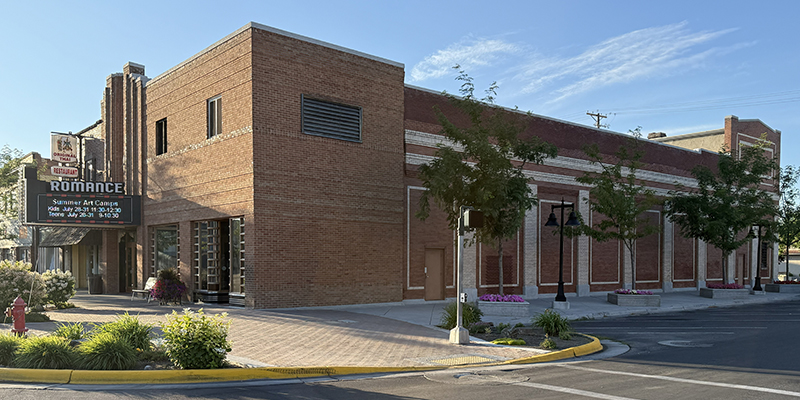
Rexburg | Madison County
Romance Theater
Mark Madison constructed this Art Deco–style theater between July 1916 and February 1917, opening it as the Rex Theater on February 28, 1917. A year later, A. P. Horne purchased the building and renamed it the Columbia Theatre, operating it for six years as a venue for both films and live performances. The theater introduced early innovations such as an ice-cooling system and a modern theater organ, and it quickly became a community hub, hosting events like the 1923 J.C. Penney fashion show.

Chesterfield | Caribou County
Historic Chesterfield Townsite
From its beginning in 1846, the story of the migration of the Mormon population to establish a new society in the Mountain West is basic to an understanding of the area’s history. Chesterfield, Idaho, remains as one of the best-preserved colonies among the five hundred or so established by the Latter-Day Saints after their arrival in the Great Basin. Its principal structures, plan, and landscape all contribute to make it exemplary in the development of the Mormon settlement pattern. ISHS holds an easement of 7 total properties in Chesterfield.

